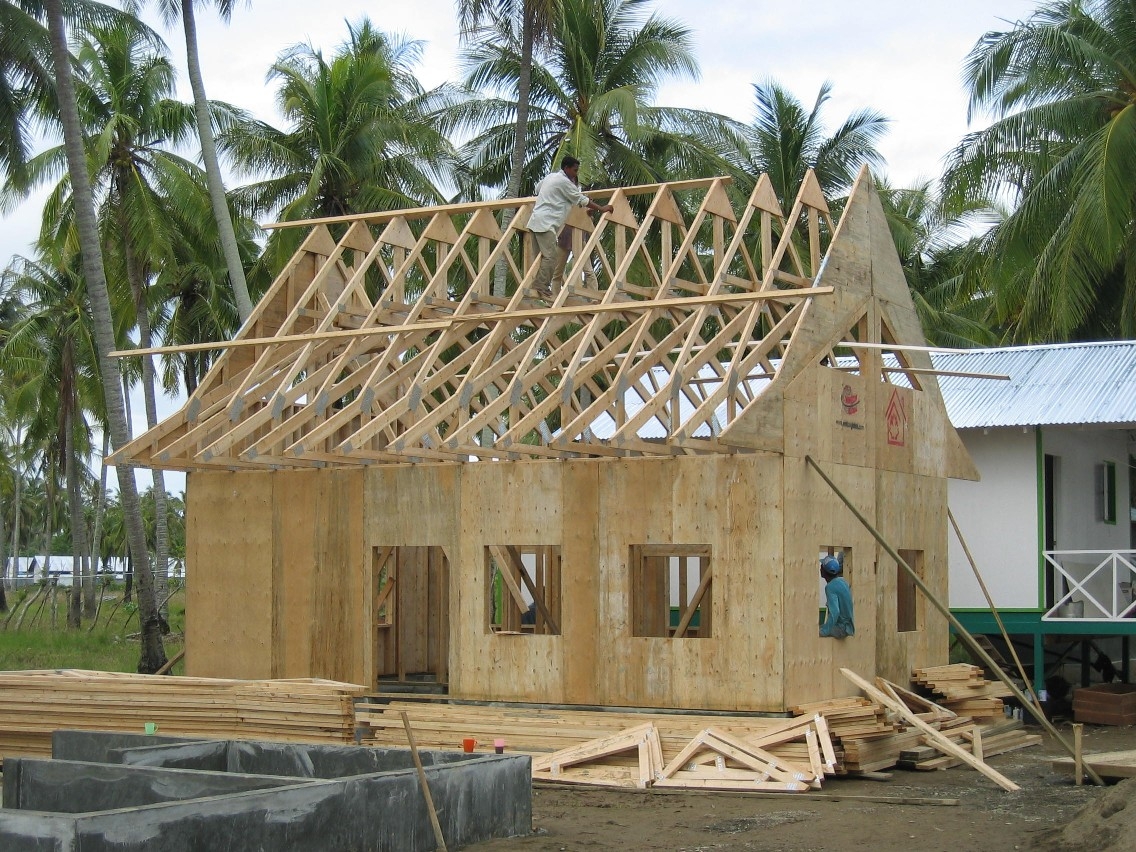Local Firm Involved in Rebuilding Tsunami Devastated Areas
By 250 News
Thursday, December 28, 2006 04:03 AM

This Winton Global pre-fab home is of the type being built in Sumatra (photo courtesy Winton Global)
A Prince George engineering firm is a key player in the rebuilding of villages devastated by the 2004 Tsunami. Simon Yu's company, Simon and Co. is overseeing completion of the first of the 267 pre fab homes built in north Sumatra using pressure-treated structual lumber and plywood from B.C.
This is the same project Prince George based Winton Global had been involved in last year, when it sent some pre-fab homes to Indonesia. (photo above)
Minister of Forests and Range, Rich Coleman has high praise for the products "B.C.'s value-added wood products and construction techniques are among the best in the world," said Coleman. "It's rewarding to see B.C. products and practices being used to help with Indonesia's housing needs as they rebuild the communities and lives of those families displaced by the tsunami."
Construction is not easy says Yu, who says there are challenges to build homes that can withstand the worst Mother Nature can send "The homes must be affordable and able to withstand earthquakes, severe weather and termites. And because most of the road system along the coastline was destroyed by the tsunami, delivering supplies to remote communities
often has to be done on foot."
The homes are being built to Canadian engineering standards and tests show they are stronger and more durable than brick or cement block buildings. The pressure treated structural lumber and plywood are shipped to Indonesia and assembled on site using local crews supervised by Simon and Co.
Minister of Forests and Range, Rich Coleman has high praise for the products "B.C.'s value-added wood products and construction techniques are among the best in the world," said Coleman. "It's rewarding to see B.C. products and practices being used to help with Indonesia's housing needs as they rebuild the communities and lives of those families displaced by the tsunami."
Construction is not easy says Yu, who says there are challenges to build homes that can withstand the worst Mother Nature can send "The homes must be affordable and able to withstand earthquakes, severe weather and termites. And because most of the road system along the coastline was destroyed by the tsunami, delivering supplies to remote communities
often has to be done on foot."
The homes are being built to Canadian engineering standards and tests show they are stronger and more durable than brick or cement block buildings. The pressure treated structural lumber and plywood are shipped to Indonesia and assembled on site using local crews supervised by Simon and Co.
Previous Story - Next Story
Return to Home










I am sure they don't care what color the wood is... If all else fails, paint it or put it under sheet rock... it can't be seen then....